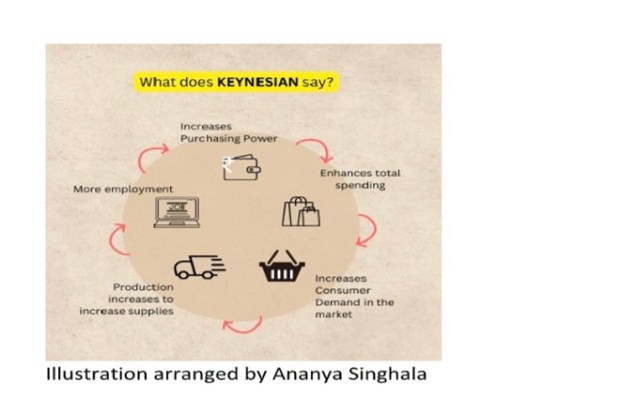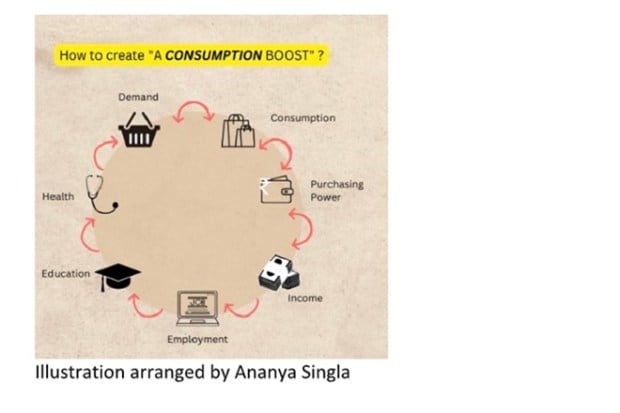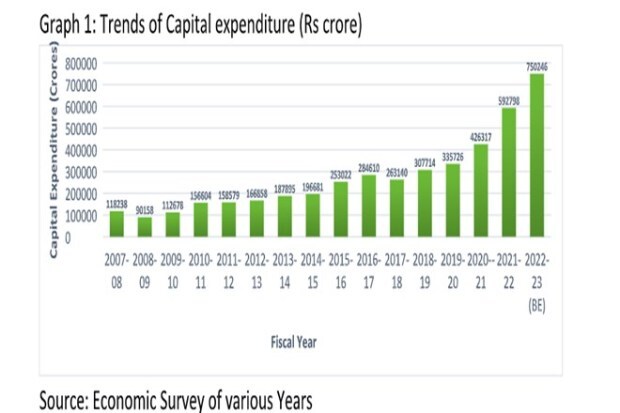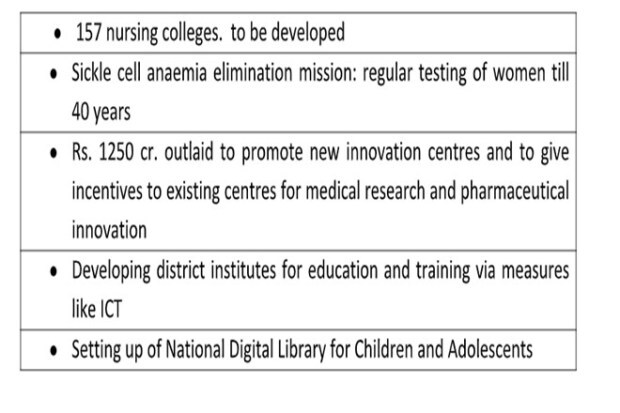By Dr Utsav Kumar Singh
On 15 August 2022, India celebrated 75 years of independence. There are many reasons for celebration; robust economic growth, achieving the important transition from a food importer to a food exporter and becoming a leading force in space and satellite technology, among other praiseworthy advances. India’s overall performance reflects the country’s ascending position to the fifth-largest economy in the overall GDP ranking. The success overtakes the colonisers of the past and leaves positive impacts on the psyche of Indians.
The flip side of success is however showing some disturbing pictures. The country is home to the largest number of poor people in absolute numbers.
Also Read: Russia delivers the 3rd regiment of S-400 `Triumf’ to India
NITI Aayog (2021) report shows that 25per cent of the people in India are living in abject multi-dimensional poverty. One in every four Indians are multidimensionally poor. The juxtaposition of these two sides needs to be addressed.
The journey of India stands as a testament to a country that embarked on the journey of Amrit Kaal. The idea envisaged a strong and prosperous India in 2047. The vision is to create an equal and unbiased society for all, people equipped with quality education, access to health care and decent jobs to support a better standard of living for individuals. The notion relies upon modern infrastructure and less government interference in people’s lives. The targets of Amrit Kaal are intertwined with the universal goals of Sustainable Development Goals (SDGs) given by the United Nations Development Programme (UNDP). The agenda of SDGs promises to “leave no one behind” by 2030.
As a member state of the United Nations, India has pledged to achieve the targets of SDGs by the target year of 2030. SDGs are a culmination of social, environmental and economic dimensions of development. The goals are interconnected;the success of one goal amplifies the progress of other goals. Consequently, the realization of Amrit Kaal relies on the realization of SDGs. The country has scaled progress in the first four years (from 2016 to 2019) but the success path was distorted by the COVID-19 pandemic and the crisis was
further amplified by the Ukraine-Russia conflict. A recent report published by Lancet (2023) reveals that the country is lagging behind in 19 of the 33 SDG indicators. Most of them are indicators of social goals; access to basic services, poverty, health, stunting and wasting of children, child marriage, partner violence, use of tobacco and modern contraceptive. Further, the report suggests that the deprived districts are concentrated in the same state which performed low in Multi-Dimensional Poverty Index namely Bihar, Madhya Pradesh, Chhattisgarh, Jharkhand and Odisha.
To redeem the vision of Amrit Kaal there is an urgent need to give extra thrust to the social goals of SDGs: No Poverty (SDG 1), Zero Hunger (SDG 2), Good Health & Well Being (SDG 3), Quality Education (SDG 4) and Gender Equality (SDG 5). To improve the social indicators, the economy needs better economic and environmental indicators.
Roadmap To take the economy out of recession, a group of economists believe in the approach prescribed by John Maynard Keynes. Keynes overturned the idea that the market is governed by an ‘invisible hand’. Rather than relying on market forces, Keynes argued that government intervention is necessary to reboot the economy from recession. Keynes’s focus was on increasing aggregate consumer demand by boosting purchasing power generated by more employment opportunities, production, and consumption (See Pic1).

The United Nations Population Fund (2022) projection revealed that India would cross China’s population in 2023. Chatterjee & Subramanian (2020) consented that, despite the world’s largest population, the market size of India is one-fifth of the size of China. Further, the study shows that there is a large size of poor population and a small cohort of high earners. The former does not consume middle-class goods and the latter has a high rate of saving, contracting their consumption. India needs to unleash the power of poor people by providing access to better health services and quality education. By doing this India can convert its population into a consumer. The model has the potential to take the country towards the realization of Amrit Kaal.
Drawing on the Keynesian model, we are proposing an extended version of it, we have added the dimension of human development, conceptualised by Mahbub Ul Haq and Amartya Sen in the first Human Development Report (1990). The idea finds its genesis in Sen’s capability approach. We believe that demand and consumption depend on purchasing power which can be attained by decent income generated by employment opportunities, which can be reaped by the level of education and health condition (See picture 2).

The model has the potential to take the country towards the realization of Amrit Kaal. The model can yield results by increasing capital expenditure as suggested by Keynes. Trends show positive indications in budgetary allocation (See Pic 3). Starting from 2008, we see an upward trend in the capital expenditure done by the government. As seen from the graph, the increase was linear until 2018, after which it has been showing an exponential increase. Expenditure in infrastructure leads to both inclusive and efficient growth.

Way forward
Commitment for achieving sustainable development goals reflected in the budget (2022-23) outlays certain measures. Budget (2022-23) shows the government dedication for improving infrastructure. Rs 10 lakh crore has been laid out for capital investment, a steep hike of 33 per cent for the third year in a row, to enhance growth potential and job creation and increase private investments. Rs 2.4 lakh cr. have been outlaid for railways (an increase of more than Rs 1 lakh cr.), Rs. 2.7 lakh cr. for roadways and Rs. 1.9 lakh cr. for electricity. Expenditure in these areas will lead to better productivity and fulfil the need to create employment and growth. In social sector, budget prioritise, agriculture, health, quality education, skill development and women empowerment with other programmes.

India’s multisectoral approach to provide decent living standard to its citizen and upliftment of marginalised and deprived group is visible in first budget of Amrit Kaal. The policy makers understand that an immediate interjection of spending is needed to revitalize the Indian economy. Policy expenditure done in these areas will help to achieve SDGs, and subsequently, reach the humane world at the end of Amrit Kaal.
Dr. Utsav Kumar Singh is Coordinator, Centre for Development Studies, Shaheed Bhagat Singh College, University of Delhi and Surbhi Gupta is Vice President, Centre for Development Studies, Shaheed Bhagat Singh College, University of Delhi. Ananya Singla, Graphics Head, Centre for Development Studies, Shaheed Bhagat Singh College, University of Delhi.
Disclaimer: Views expressed are personal and do not reflect the official position or policy of Financial Express Online. Reproducing this content without permission is prohibited.

